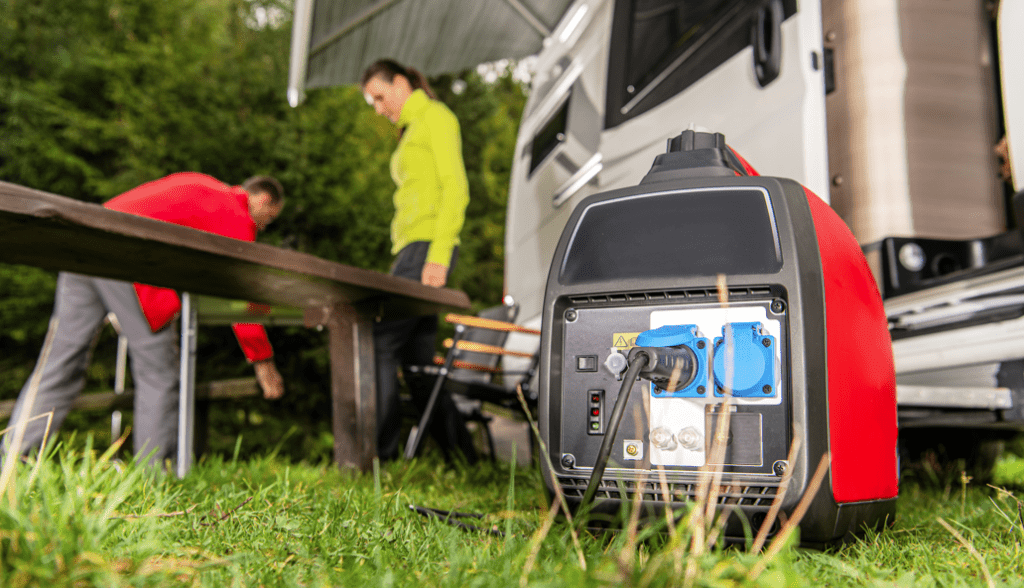What is the one thing that could bring your daily life to a standstill? A power outage.
Without power, many of the essential things we do today are not possible. This is why homeowners need to have a portable generator on standby.
The issue with portable generators is that they are expensive and have limited capacity, making them easily damaged by a power overload.
Now, a question always comes up regarding this topic, and nobody seems to answer: what happens when you overload a generator?
This article I made will answer that question (and some others) to inform you about the dangers of overloading a generator.
Let’s get right into it.
What Is It to Overload a Generator?
Let’s get our fundamentals right; all appliances have starting and running watts. Starting watts are required to start the appliance, while running watts are needed to keep it running once started.
A regular microwave oven, for example, requires 1700 watts to start up but only 600 watts to run.
In that context, the overloading of a generator happens when you run too many appliances at once and exceed your generator’s wattage capacity.
Some portable generators are protected from being overloaded by circuit breakers, which are like light switches that automatically turn off when there is a short circuit or too much current.
But, if you happen to have a generator without overload protection, the consequences of overloading it could be from automatically shutting down to completely lighting on fire—pretty serious stuff.
What Happens When You Overload a Generator?
Now that we know exactly what it is to overload a generator, we can get straight into learning what exactly happens when you overload a generator.

Temperature Rise
The first thing that will happen is that all the generator’s internal components will get hotter and hotter.
There is not a high risk of combustion with most modern generators (as they have overload protection), yet there is always the tiny chance it could happen if you put more wattage on your generator than it can handle.
Intermittent Power
When overloading a generator, there is a solid chance it will start to operate in an unstable manner, meaning it will output power intermittently.
This is highly damaging for devices, as they are designed to work under a stable wattage stream.
This, of course, could brick expensive devices such as laptops, smartphones, and similar equipment.
Automatically Shut Off (Only for Modern Generators)
Knowing that most portable generators deal, sooner or later, with power overloads, some brands decided to add a unique feature to solve this issue called “overload protection” which is controlled by a circuit breaker.
The overload protection in a portable generator is a system that senses when the appliances plugged into the generator are drawing more wattage than the generator can handle. To avoid serious issues, then this system shuts the generator off altogether.
This particular feature was added only a few years ago, which might mean that most old generators don’t have it.
What’s the Best Generator to Avoid an Overload?
This is a question that I get a lot, what is the best generator that can help you avoid a power overload?
Well, first, let me tell you about the features I look for in a portable generator that can handle many appliances simultaneously to avoid power surges:
- At least 9,000 of running wattage as I feel that’s the sweet spot when it comes to powering your most essential electronics
- Certain portability, as you should be able to move it for when you’re camping or even working at a construction site
- Overload protection that uses a circuit breaker to shut off the generator whenever it senses the wattage drawn by the plugged appliances is too much.
Now to the good stuff; which generator do I recommend?
DuroMax Gas Powered Portable 12,000w Generator

Let me tell you a bit about this generator and why I believe it is the best to prevent a generator from being overloaded.
First, it delivers 12,000 starting watts and 9,500 running watts, which is perfect for running multiple devices at once, risking a power overload. And it does it on either gas or propane, which is convenient!
Moreover, it can run at 120V and 240V simultaneously, which is essential for some. It also has a circuit breaker to make sure you can easily avoid a power overload.
Last but not least, it has a low oil sensor making sure that the generator will last longer even if you forget about maintaining it.
How Can You Prevent Overloading a Generator?
There are a few ways to prevent overloading a generator. Let’s discuss them.

The first thing to do is check your owner’s manual for the wattage capacity of your generator. This will give you an idea of what your generator will be able to handle.
The second step is to check the wattage needs of the appliances you plan to hook to the portable generator.
You can check the wattage of each of the appliances by looking at the nameplate on the device. The nameplate will tell you how many volts and amps your appliance uses. You can multiply volts by amps to get watts.
If you’re a bit techier, you could even get a power monitor to measure how much wattage any given appliance is drawing when it’s just turned on, when idle, or in full operation!
I personally like this following power monitor and it’s not even that expensive:
P3 International P4460 Kill A Watt EZ Electricity Usage Monitor

I like this specific power monitor because of the following features:
- It has an accuracy of 0.2%, which is perfect if you want maximum precision
- Easy to read screen
- Multiple units (watts, amps, volts, etc)
- It even allows you to add utility costs to monitor how much money you spend on running that specific device

